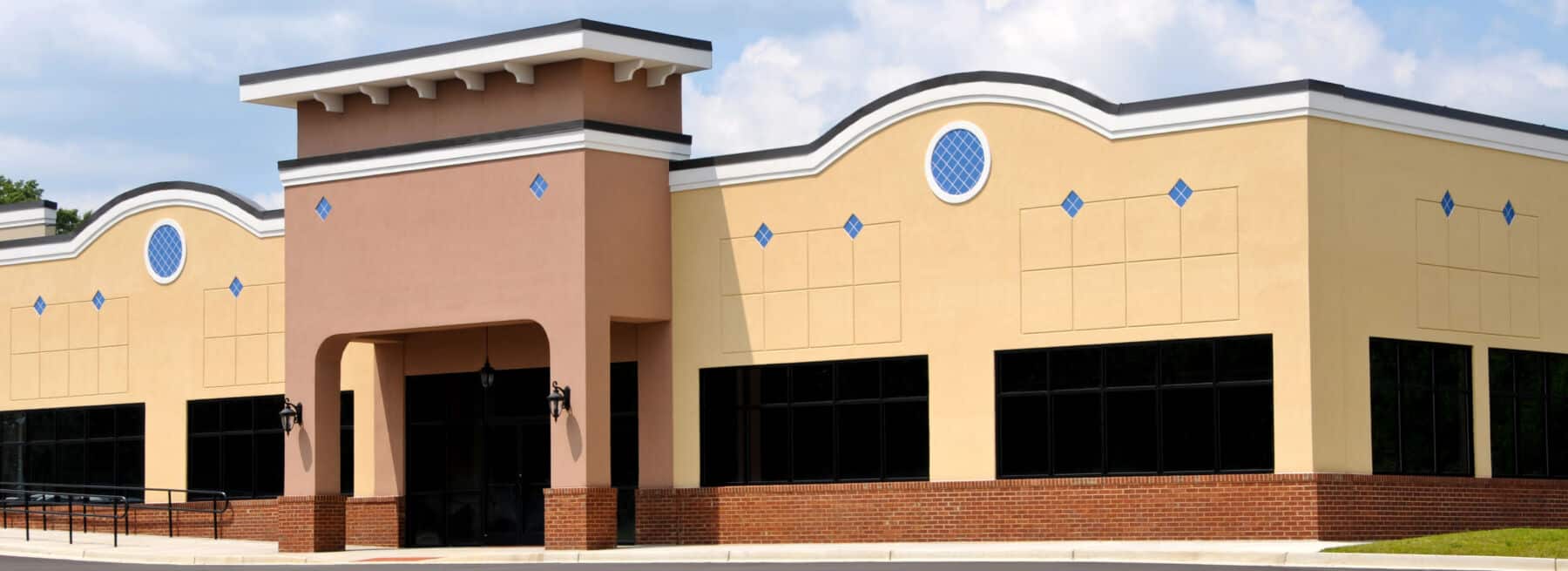Security concerns have become paramount for companies spanning various industries. Leaders find themselves at the forefront of a multifaceted challenge, encompassing physical security. The repercussions of compromised business security can be staggering, translating into potential financial losses in the millions if employees fail to exercise vigilance.
Investing in a comprehensive business security system is a substantial commitment. Particularly for larger commercial real estate properties, the deployment of multiple security cameras becomes imperative. Therefore, property managers and owners must meticulously plan their security solutions, ensuring a strategic approach to the acquisition of surveillance cameras.
Safeguarding company property is indispensable for maintaining seamless operations, prompting business owners to explore proactive measures to address security needs. Here are the top proactive and innovative ways to fortify business security for commercial properties.
Implementing Security Policies
Creating, implementing, and maintaining robust security policies in a business is imperative in today’s interconnected and technology-driven world. A well-crafted set of security policies serves as a proactive shield, safeguarding sensitive information, critical assets, and the overall integrity of the organization.
Before formulating security policies, conduct a thorough risk assessment. This helps identify potential vulnerabilities, assess the impact of security breaches, and understand the specific risks relevant to the business. This lays the foundation for tailoring policies to address the organization’s unique challenges.
Security policies should be clear, comprehensive, and easily accessible to all employees. Explain the dos and don’ts in plain language, outlining acceptable use of technology, data handling procedures, and the consequences of policy violations. Make sure that policies are regularly updated to align with evolving threats and industry best practices.
Implementing security policies is only effective when employees are aware of and understand them. Conduct regular training sessions to educate employees on security best practices, the importance of adherence to policies, and the role each individual plays in maintaining a secure environment.
Establish a routine for conducting regular security audits and compliance checks. These assessments help identify gaps or deviations from established policies, allowing for timely corrections and improvements. Regular audits also demonstrate a commitment to compliance and security to stakeholders.
Develop and communicate a robust incident response plan within the security policies. Define the steps to be taken in the event of a security incident, to help assure a swift and coordinated response to minimize potential damage.
Security is an ever-evolving landscape. Implement continuous monitoring systems to stay on top of emerging threats and technological advancements. Be prepared to adapt and update security policies in response to changing circumstances.
Employing Zero-Trust Security
Implementing a zero-trust security framework has emerged as a strategic necessity for businesses seeking to bolster their security. Zero-trust security applies a mindset that trust is never assumed, regardless of the user’s location or the network’s perimeter. This proactive approach aligns with the reality that trust should never be assumed and underscores the importance of a comprehensive and adaptive security posture.
At the core of the zero-trust approach is the principle of “verify and never trust.” This means that every user, device, or application attempting to access the building or network undergoes continuous verification. Their origin or past interactions don’t matter.
This comprehensive authentication process involves scrutinizing user identity, device health, and contextual factors such as location and time. By eliminating the implicit trust traditionally placed within the network, organizations can significantly reduce the risk of unauthorized access and lateral movement.
Zero-trust security involves the segmentation of networks, creating micro-perimeters around specific resources or data. This micro-segmentation strategy limits lateral movement within the network, even in the event of a successful breach. By compartmentalizing data and resources, organizations can mitigate the potential impact of a security incident and enhance overall resilience.
Furthermore, zero-trust security emphasizes continuous monitoring and analytics to help detect unusual activities promptly. Behavioral analysis, machine learning, and threat intelligence play crucial roles in identifying potential threats in real time, to help organizations respond proactively to emerging risks.
Installing Video Cameras with Remote Monitoring
A traditional security camera system simply puts cameras around the commercial property. They don’t typically catch crime as it’s about to happen or while it’s happening. Therefore, it’s reactive business security. Basic video cameras are only good for capturing a video of the crime.
Video surveillance technology has advanced to turn it into one of the most effective and proactive security solutions. The key comes in the monitoring done by humans and video analytics. A commercial property can have multiple eyes watching without stationing a person on the property.
So, how do video analytics and monitoring operators help catch a crime before or as it’s happening if they are not physically on-site? Video analytics and trained monitoring operators can watch cameras in real-time. This partnership of technology and people can do much more than if they worked alone.
Video analytics has many preprogrammed scenarios that it looks for while scanning all the cameras. They’re more likely to spot anomalies than humans. But technology is not always accurate, and it doesn’t know what to do when something happens.
If the security operator confirms suspicious behavior, then they can issue a warning over an onsite speaker. If that fails to stop the intruders, then they can call law enforcement and update them on the suspect’s movements.
Everything can be saved as recordings. These can serve as evidence and help identify people, vehicles, and other information. If someone files a liability claim, a team of trained analysts can search the video footage to piece together what took place. Liability claims are tough to win without proof. Video cameras provide that proof.
Adding Access Control and Multimodal Biometrics
Technologies like fingerprint scans, facial recognition, and behavioral biometrics are vital in anticipating security issues, spotting unusual activities, and identifying potential safety hazards. The incorporation of AI and automation in access control systems has streamlined the authorization process, especially with the introduction of multimodal biometrics.
Multimodal biometrics involves combining different identifiers, like voice recognition, retinal scans, and behavioral biometrics. This blend of multiple biometric methods enhances accuracy and adds an extra layer of security to the access control process, ensuring more reliable identity verification.
Before this advancement, single-layer authentication made it easy for hackers to find creative ways to gain unauthorized access. The introduction of multimodal biometrics transforms the authentication process into a multi-faceted approach, which levels up business security. While some systems used two-factor authentication in the past, it often proved troublesome for users.
In implementing an access control system, start by defining access controls and authentication mechanisms to restrict unauthorized access to sensitive information. Amplifying security involves applying multi-factor authentication, role-based access, and least privilege principles.
The significance of this trend lies in its user-centric approach, prioritizing both security and convenience. Employees encounter less friction during the authentication process, making it easier to access secured areas.
Using Smart Locks
For business security, robust doors and locks have long been the frontline defense against unauthorized access. Yet, the continuously evolving criminal tactics call for a more proactive approach to protecting commercial property. This is where smart locks enter the picture. They’re a modern technological solution that augments security measures and provides business leaders with a more dynamic means of protecting their commercial properties.
Smart locks revolutionize access control by offering keyless entry options for business owners. Instead of relying on traditional keys, these locks use technology such as Wi-Fi or Bluetooth connectivity, paired with a smartphone, to enable secure and convenient access to buildings or specific rooms. This keyless entry eliminates the risk of lost or stolen keys while adding a layer of sophistication to the security protocol.
The advantages of smart locks go beyond their keyless functionality. Anytime there’s suspicious activity, these devices can provide live alerts to businesses. This helps enable swift responses to potential security threats. Additionally, the capability to control and monitor access to the premises ensures that businesses know who enters and exits their facilities, enhancing overall security management.
However, the effectiveness of smart locks heavily relies on the strength of cybersecurity and video surveillance measures. To thwart cunning intruders, it’s imperative for businesses to choose devices with robust security protocols. The resilience of these smart lock systems lies in their ability to withstand potential workarounds and ensure that unauthorized access remains a challenge.
As business leaders navigate the many security threats, embracing smart locks emerges as a strategic step towards hardening commercial properties and staying ahead in the ongoing battle against unauthorized intrusion.
In an era defined by technological progress and an escalating awareness of security risks, businesses must embrace innovative solutions to redefine their approach to business security. The combination of these business security elements culminates in a robust security framework.
As industries strive to anticipate and combat emerging threats, the ongoing evolution of security measures underscores the adaptability and resilience required in a constantly changing risk landscape. Through this holistic approach, commercial properties can help protect their businesses with a multidimensional shield.
Today’s criminals have become more sophisticated and brazen in their tactics. Your Complete Guide to Securing Your Office will help you understand what business security is effective. Grab your copy or to learn more, contact us.
Texas Private Security License Number: B14187
California Alarm Operator License Number: ACO7876
Florida Alarm System Contractor I License Number: EF20001598
Tennessee Alarm Contracting Company License Number: 2294
Virginia Private Security Services Business License Number: 11-19499
Alabama Electronic Security License # 002116
Canada TSBC License: LEL0200704

